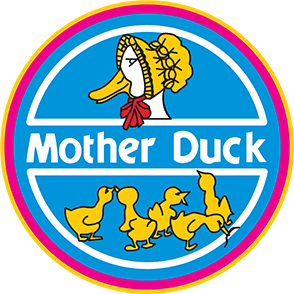
5 mindful breathing exercises to support children with self-regulation
When I work with parents and children, I am often asked by parents what they can do to help their children develop better self-regulation skills. The first thing I always tell them is that self-regulation is not something a child can learn until they are developmentally ready to do so.
The next thing I tell them is that self-regulation can only develop after multiple instances of co-regulation with a safe and trusted parent or caregiver. We cannot force or rush the development of self-regulation. It is a gradual process that happens over many years and in the context of safe, supportive relationships.
However, that doesn’t mean we should give up entirely on teaching children skills and strategies that may help them better regulate their nervous systems. We absolutely can teach our children these skills – when they are ready to learn them, and after the foundations of co-regulation have already been laid. First, we create safety and connection and THEN we teach skills.
And one very effective way to teach children these skills is through breathing exercises. By practising simple breathing techniques, children can learn to regulate their emotions, reduce stress, and improve focus. In this blog post, we will explore five breathing exercises that are specifically designed to aid children in developing self-regulation skills. These exercises can be easily incorporated into your child’s daily routine, both at home and in educational settings.
The benefits of mindful breathing for children:
Mindful breathing is hugely beneficial to children and adults alike. Here are some of the main reasons to teach your child mindful breathing:
It supports healthy emotion regulation:
Mindful breathing provides children with a practical tool to manage their emotions. By focusing on their breath, children develop the ability to calm themselves during moments of stress, anxiety, or frustration.
It improves concentration:
Regular practice of mindful breathing exercises enhances children’s ability to focus and concentrate. By directing their attention to their breath, children learn to tune out distractions and stay present in the moment, which helps with learning and academic performance.
It reduces stress:
Mindful breathing helps children reduce stress levels and promotes a sense of relaxation. Deep breathing activates the body’s relaxation response, triggering a state of calmness and reducing the physiological symptoms of stress.

It builds self-awareness:
Mindful breathing encourages self-awareness by helping children connect with their bodies and the physical sensations within them. This increased awareness helps children recognise their emotions, thoughts, and physical sensations, allowing them to better identify early warning signs of stress and then respond rather than react impulsively.
It promotes emotional resilience:
Teaching skills like mindful breathing helps children understand that they have the ability to respond differently to emotions. It empowers them and helps them become more resilient in the face of challenges. They feel capable and confident as they learn to navigate difficult emotions, bounce back from setbacks, and develop healthy coping mechanisms.
Why is mindful breathing so powerful?
To understand why mindful breathing works so effectively for children, we need to understand the stress response and the brain’s role in regulating emotions. When faced with stress or a perceived threat, the body activates the sympathetic nervous system, triggering the “fight-or-flight” response. This response prepares the body to either fight the threat or run from it in order to be safe. However, chronic activation of the stress response can lead to difficulties in self-regulation and emotional well-being.
Mindful breathing helps counteract the stress response by activating the parasympathetic nervous system, which is responsible for the body’s relaxation or “rest and digest” response. Deep, slow breaths stimulate the vagus nerve, sending signals to the brain to lower heart rate, reduce blood pressure, and decrease the levels of stress hormones like cortisol.
Mindful breathing also engages the prefrontal cortex, the area of the brain responsible for decision-making, emotional regulation, and impulse control. Regular practice of mindful breathing strengthens neural connections in this region, improving its ability to regulate emotions effectively. It also helps balance the amygdala, the brain’s emotional control centre, which plays a crucial role in the stress response. By activating the prefrontal cortex and calming the amygdala, mindful breathing enables children to respond to stressful situations more calmly.
Incorporating mindful breathing exercises into children’s daily routines provides them with a valuable tool for managing their emotions, reducing stress, and improving overall well-being. And when we understand the physiological and neurological mechanisms behind mindful breathing, we can truly appreciate just why it’s such an effective and important self-regulation skill for children to learn. So let’s talk about how to teach them to your child!

5 mindful breathing exercises children love:
1) Balloon Breaths
Balloon Breaths is a simple breathing exercise that helps children visualise their breath as if they were inflating and deflating a balloon. Here’s how to guide your child through this exercise:
1. Find a comfortable seated position. Encourage your child to sit with their back straight and shoulders relaxed.
2. Instruct your child to take a slow, deep breath in through their nose, imagining that their lungs are filling up like a balloon.
3. As they exhale through their mouth, ask them to visualise the balloon deflating and gradually becoming smaller.
4. Repeat this process several times, encouraging your child to focus on their breath and the visualisation of the balloon.
This exercise not only helps children regulate their breathing but also fosters a sense of control and relaxation.
2) Counting Breaths:
Counting Breaths is another simple yet effective breathing exercise that aids in grounding children and increasing their awareness of the present moment. Here’s how to do it:
1. Have your child find a comfortable position, either sitting or lying down.
2. Instruct them to take a slow, deep breath in through their nose, counting silently to themselves as they do so.
3. As they exhale through their mouth, have them count again, matching the count to their inhale.
4. Encourage your child to continue this pattern, focusing on the breath and the counting.
Counting Breaths gives children an anchor point to focus on, helping children redirect their attention to the present moment, which enables them to regulate their emotions more effectively.

3) Feather Breathing:
Feather Breathing is a gentle and calming exercise that encourages children to practice slow and controlled breaths. Here’s how to guide your child through the exercise:
1. Give your child a small feather (if you don’t have one, or if you have an easily frustrated or very young child, you may like to do this as a visualisation exercise instead)
2. Instruct them to hold the feather close to their face.
3. As they inhale slowly through their nose, ask them to gently blow on the feather to keep it afloat.
4. Encourage them to exhale slowly through their mouth, maintaining a gentle stream of breath on the feather.
5. Repeat this process several times, emphasizing the slow and controlled breaths.
Feather Breathing promotes deep breathing, and relaxation, and helps children learn to gain control of their breath.
4) Bumblebee Breathing:
Bumblebee Breath is a calming exercise that engages both the breath and vocalisation. Here’s how to practice bumblebee breathing:
1. Guide your child to sit comfortably, with their back straight and shoulders relaxed.
2. Instruct them to take a slow, deep breath in through their nose.
3. As they exhale, ask them to make a humming sound, mimicking the buzzing of a bee.
4. Encourage your child to focus on the vibration and the calming effect of the sound.
Bee Breathing helps children release tension and promotes a sense of tranquility and self-awareness. It is particularly powerful because using the voice in this way further engages the vagus nerve, which is responsible for switching off the stress response.
5) Hot Chocolate Breathing:
Hot Chocolate Breathing encourages children to imagine sipping a warm mug of hot chocolate while practicing deep breaths. Here’s how to do it:
1. Have your child find a comfortable seated position and close their eyes.
2. Instruct them to take a slow, deep breath in through their nose, imagining they are slowly sipping a mug of hot chocolate.
3. As they exhale through their mouth, encourage them to visualise the warmth of the hot chocolate spreading through their body.
4. Repeat this process, guiding your child to focus on the sensation of warmth and relaxation with each breath.
Hot Chocolate Breathing promotes a sense of comfort and relaxation – and yes, you could absolutely do this with a real mug of hot chocolate!
So there you have it! I hope you have lots of fun teaching and practising these mindful breathing exercises with your child – don’t be afraid to try these exercises out yourself, too!

Teaching children self-regulation skills really is crucial for their overall well-being. And by introducing them to simple breathing exercises like the ones mentioned above, we can empower children to manage their emotions effectively. I encourage you to practice these exercises regularly, and where you can, to incorporate them into your child’s daily routines. With patience and consistency, as well as the guidance of a safe and supportive adult, children can absolutely develop the ability to regulate their emotions, reduce stress, and find inner calmness, enabling them to navigate life’s challenges with resilience and confidence.
Sarah Conway is a child and adolescent psychologist, mother of 4, and founder of Mindful Little Minds. She has over 15 years of experience working in mental health with children, teenagers, and families. Sarah’s mission is to help parents move away from punitive parenting strategies and towards mindful, intentional parenting that builds emotional intelligence in children and parents alike. As a busy mum herself, she knows firsthand how difficult mindful parenting can be, particularly when it was never modeled by our own parents. That’s why she provides parents and children with simple, practical strategies and tools that help them learn to manage emotions – together. She believes that changing the way we parent will change the world.



